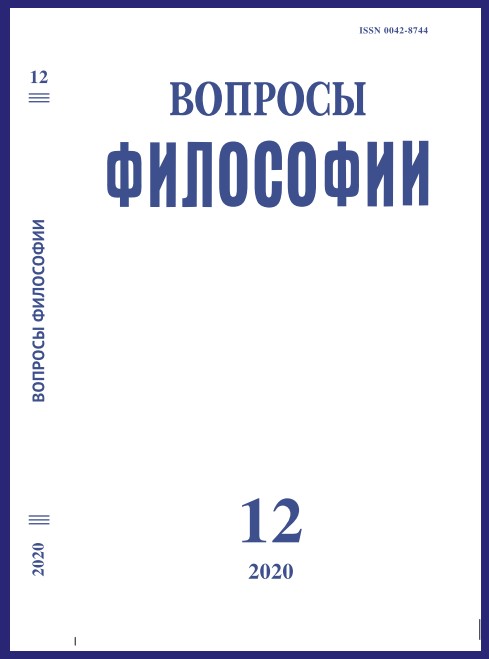“Utterly Dark Spot”: Suprematistic Pangeometry and Seeing the Invisible
DOI:
https://doi.org/10.21146/0042-8744-2020-12-81-92Keywords:
Russian avant-garde, suprematism, K. Malevich, Black Square, axonometry, perspective, fourth dimension, J.-L. Marion, icon, phenomenology, seeingAbstract
The article examines the religious and philosophical components of K. Malevich’s Suprematist paintings and the origin of their revolutionariness in the wide context of theoretical works: N. Lobachevsky’s “pangeometry”, El Lissitsky’s axonometry, P. Ouspensky’s fourth dimension, P. Florensky’s reverse perspective, Z. Freud’s attraction to death, J. Lacan’s the symbolic and the real, the absolute presence of God through invisibility in the religious philosophy of
J.-L. Marion. The author traces the stages of conceptualization of K. Malevich’s Suprematism: from the sketch of stage sets in opera «Victory over the Sun» (1913), where the predecessor of “Black square” (1915) first appeared, to the Suprematist abstract paintings with three-dimensional axonometric views of geometric figures and, finally, to their complete destruction. The phenomenon of total invisibility, being a method of negative theology, becomes a condition for the birth of the Suprematist icons “Black square” and “White on white” (1917‒1918), which should be taken not as a regression to the two-dimensionality of paintings, but as an absolute form of the axonometric projection, the invisibility as a total seeing. The complete negation of geometric forms – a dead end, «an utterly dark spot» – can be understood as a space for transition toward the sacred transcendental Being, the presence of an absolute artistic form, which is endowed with the highest sacred meaning. The revolutionariness of Suprematism in this sense does not lie in its utopian contents. On the contrary, it is present in the “zero degree of forms” that denies even itself and in the contemplation per se on this emptiness as fullness.

